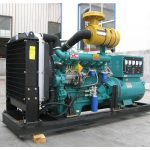Introduction
Diesel generators are essential power backup systems used in various industries, commercial establishments, and residential settings to ensure uninterrupted electricity supply during power outages. These generators are known for their reliability, durability, and ability to provide continuous power for extended periods. In situations where a single generator may not be sufficient to meet the power requirements, parallel operation of multiple diesel generators can be employed to increase capacity and enhance system reliability.
This article aims to provide a comprehensive guide to diesel generators for parallel operation, covering the principles of parallel operation, benefits, considerations, best practices, and challenges associated with running multiple generators in parallel.
Principles of Parallel Operation
Parallel operation of diesel generators involves connecting two or more generators to operate together and share the load. This configuration allows the generators to work in harmony to meet the total power demand of the load. When generators are connected in parallel, they must be synchronized to ensure that they are operating at the same frequency and voltage levels.
The synchronization process involves adjusting the speed and voltage output of each generator to match the reference generator. This ensures that the generators are in phase and can share the load evenly. Failure to synchronize the generators properly can result in voltage and frequency mismatches, leading to unstable operation, potential damage to equipment, and power quality issues.
Benefits of Parallel Operation
There are several benefits to operating diesel generators in parallel:
1. Increased Capacity: Parallel operation allows multiple generators to work together to meet higher power demands than a single generator can handle. This enables users to scale their power supply based on the load requirements, making it a flexible and scalable solution.
2. Redundancy and Reliability: By running generators in parallel, redundancy is built into the system. In the event of a failure or maintenance issue with one generator, the remaining units can continue to supply power, ensuring continuity of operations.
3. Improved Efficiency: Operating generators in parallel can lead to increased efficiency by enabling the units to run at optimal loads. This can result in fuel savings and reduced maintenance costs over time.
4. Load Sharing: Parallel operation allows for load sharing among the generators, ensuring that each unit contributes proportionally to the total load. This helps in balancing the load distribution and prevents overloading of individual generators.
Considerations for Parallel Operation
Before implementing parallel operation of diesel generators, several key considerations must be taken into account:
1. Generator Compatibility: It is essential to ensure that the generators to be connected in parallel are of the same make, model, and rating. Mixing my review here of generators can lead to synchronization issues and inefficient operation.

2. Synchronization Equipment: Proper synchronization equipment, such as synchronizing relays, synchronizing panels, and load-sharing controllers, is required to ensure that the generators operate in harmony. Investing in high-quality synchronization equipment is crucial for the reliable and safe operation of parallel generators.
3. Control System Integration: Integrating the control systems of the generators is essential for seamless parallel operation. The control system should be capable of monitoring and adjusting the parameters of each generator to maintain synchronization and load sharing.
4. Protection and Safety: Adequate protection mechanisms, such as overcurrent protection, overvoltage protection, and reverse power protection, must be in place to safeguard the generators and connected equipment from potential damage in case of faults or emergencies.
Best Practices for Parallel Operation
To ensure the successful and efficient operation of diesel generators in parallel, the following best practices should be followed:
1. Thorough Planning: Proper planning and design of the parallel operation system are critical for its success. Factors such as load requirements, generator sizing, synchronization equipment selection, and control system integration should be carefully considered during the planning phase.
2. Regular Maintenance: Routine maintenance of the generators is essential to ensure their optimal performance and reliability. Regular inspection, testing, and servicing of the generators will help prevent failures and downtime.
3. Training and Education: Proper training of operators and maintenance personnel is crucial for the safe and efficient operation of parallel generators. Operators should be familiar with the synchronization process, load sharing principles, and emergency procedures to respond to any issues effectively.
4. Monitoring and Control: Continuous monitoring of the generators, load, and system parameters is necessary to detect any deviations from normal operation. A robust control system should be in place to automatically adjust the generator settings and maintain synchronization under varying load conditions.
Challenges of Parallel Operation
While parallel operation of diesel generators offers numerous benefits, there are also challenges associated with this setup:
1. Synchronization Issues: Achieving and maintaining proper synchronization between generators can be a complex process that requires careful adjustment of speed and voltage settings. Synchronization issues can lead to system instability and poor power quality.
2. Load Sharing Imbalance: Inadequate load sharing among the generators can result in uneven distribution of the load, causing some units to be overloaded while others are underutilized. This imbalance can lead to inefficient operation and premature wear on the generators.
3. Fault Detection and Protection: Identifying faults in a parallel operation system and implementing effective protection mechanisms can be challenging. Failure to detect and address faults promptly can result in damage to the generators and connected equipment.
4. System Complexity: Operating multiple generators in parallel increases the complexity of the power system. More extensive control systems, synchronization equipment, and monitoring devices are required, which can complicate system design and maintenance.
Conclusion
Diesel generators for parallel operation offer a reliable and efficient solution for meeting high power demands and ensuring continuity of operations. By understanding the principles of parallel operation, considering key factors, following best practices, and addressing challenges effectively, users can maximize the benefits of running generators in parallel.
Proper planning, regular maintenance, training of personnel, and robust monitoring and control systems are essential elements for successful parallel operation of diesel generators. By implementing these measures, users can enhance system reliability, efficiency, and safety while ensuring uninterrupted power supply during emergencies.
